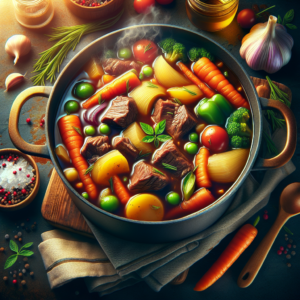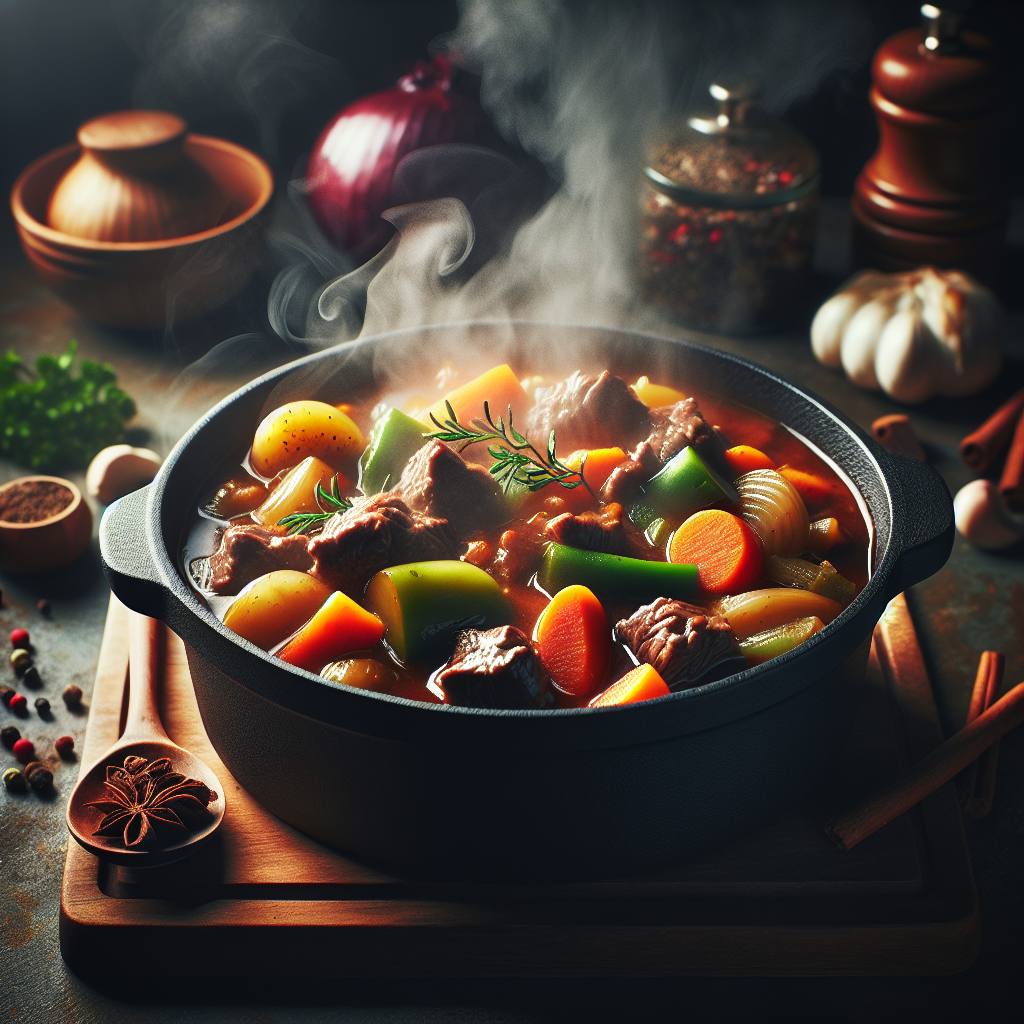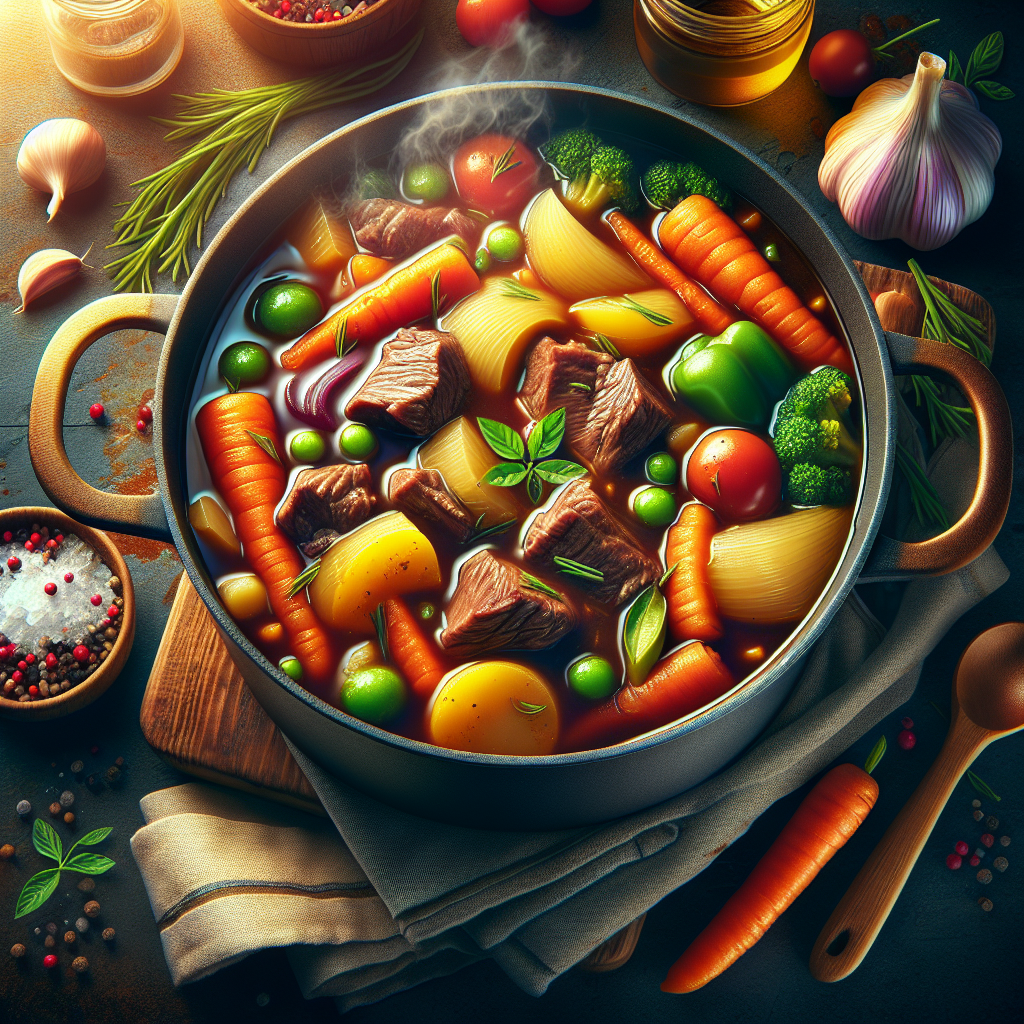Classic Beef Stew Recipe
November 20, 2023

Imagine coming home on a chilly evening to the inviting aroma of the ultimate comfort food – classic beef stew. This timeless recipe combines tender chunks of beef, hearty vegetables, and flavorful seasonings, creating a mouthwatering dish that warms both body and soul. Whether you’re a seasoned chef or a novice in the kitchen, this classic beef stew recipe will guide you through the simple steps to create a hearty and delicious meal that will quickly become a family favorite. Get ready to indulge in a bowl of cozy goodness!

Ingredients
To make a classic beef stew, you will need four main ingredients: beef, vegetables, seasonings, and broth. These ingredients work together to create a delicious, hearty stew that is perfect for any time of the year.
Beef
The star of the show in a beef stew is, of course, the beef itself. You can use any type of beef you prefer, such as chuck or stewing beef. It’s important to choose a cut of beef that is well-marbled, as this will ensure a tender and flavorful stew. Cut the beef into bite-sized pieces to make it easier to eat.
Vegetables
A variety of vegetables adds both flavor and nutritional value to your beef stew. Some classic choices include carrots, potatoes, onions, and celery. These vegetables not only provide a delicious taste and texture but also contribute to the overall heartiness of the stew. Feel free to experiment with other vegetables as well, such as mushrooms or peas, to add your own spin to the dish.
Seasonings
Seasonings are the secret to elevating your beef stew from ordinary to extraordinary. Common seasonings for beef stew include bay leaves, thyme, rosemary, and garlic. These herbs and spices add depth and complexity to the stew, making every bite burst with flavor. Don’t be afraid to adjust the seasonings to suit your own taste preferences.
Broth
The broth is what brings all the flavors together in a beef stew. You can use beef broth or beef stock as the base of your stew, or if you prefer a lighter flavor, you can use a combination of broth and water. The broth not only adds moisture to the stew but also enhances the overall richness and savory taste. Choose a high-quality broth to ensure the best results.
Preparation
Now that you have gathered all the ingredients, it’s time to start preparing your classic beef stew. This involves marinating the beef, chopping the vegetables, and cooking the stew.
Marinating the beef
Marinating the beef beforehand can help tenderize the meat and infuse it with flavor. To marinate the beef, you can combine some olive oil, Worcestershire sauce, and your choice of seasonings in a bowl. Place the beef into the marinade and let it sit in the refrigerator for at least 30 minutes, or overnight if you have the time. This extra step will make a noticeable difference in the taste and texture of your stew.
Chopping the vegetables
While the beef is marinating, you can start chopping the vegetables. It’s best to chop them into bite-sized pieces so that they cook evenly and are easy to eat. Carrots can be sliced or diced, potatoes can be cubed, and onions and celery can be chopped into small pieces. Take your time with this step to ensure that the vegetables are all uniform in size, allowing them to cook evenly in the stew.
Cooking the stew
Now comes the most exciting part – cooking the stew! Start by heating some oil in a large pot or Dutch oven over medium heat. Once the oil is hot, add the marinated beef and sear it on all sides until browned. This step helps to lock in the flavors and create a delicious crust on the meat.
Next, add the chopped vegetables to the pot and stir them together with the beef. Let them cook for a few minutes until they start to soften. Then, pour in the broth to cover the beef and vegetables. Add some bay leaves and any additional seasonings you desire. Reduce the heat to low, cover the pot, and let the stew simmer for at least two hours, or until the beef is tender and the flavors have melded together.

Tips and Variations
While the classic beef stew recipe is already delicious on its own, there are a few tips and variations you can explore to make it even more enjoyable.
Slow cooker method
If you prefer a hands-off approach to cooking, you can easily adapt the classic beef stew recipe for a slow cooker. Instead of searing the beef on the stovetop, simply place the marinated beef, chopped vegetables, broth, and seasonings into the slow cooker. Cook on low for 6-8 hours or on high for 3-4 hours, until the beef is tender and the flavors have melded together.
Freezing and reheating
Beef stew is a perfect dish to make in large batches and freeze for later. Once the stew has cooled down, separate it into individual portions in airtight containers or Ziploc bags. Label them with the date and freeze for up to three months. When you’re ready to enjoy it again, simply defrost in the refrigerator overnight and reheat on the stovetop or in the microwave until piping hot.
Vegetarian option
If you prefer a meatless version of beef stew, you can easily substitute the beef with hearty vegetables like mushrooms or tofu. The cooking process remains the same, but you’ll be amazed at how the flavors of the vegetables and seasonings come together to create a delicious vegetarian stew.
Serving Suggestions
A delicious beef stew deserves some accompaniments and garnish to enhance the overall dining experience.
Accompaniments
Traditionally, beef stew is served with crusty bread or mashed potatoes. These starchy options pair perfectly with the rich and flavorful stew, providing a comforting and satisfying meal. You can also serve it with steamed rice or noodles if you prefer a different texture. The choice is yours, so feel free to experiment and find your favorite combination.
Garnish
To add an extra pop of color and flavor to your beef stew, consider garnishing it with some fresh herbs, such as chopped parsley or chives. This adds a touch of freshness and brightness to the dish, elevating it visually and making it even more appetizing.
Conclusion
Now that you have the comprehensive recipe for a classic beef stew, it’s time to gather your ingredients and get cooking! Whether you’re making it on a cozy winter night or for a gathering with friends and family, this hearty and flavorful dish is sure to impress. Don’t forget to customize it to your taste preferences and explore different variations. So grab your apron, roll up your sleeves, and enjoy the process of creating a delicious and satisfying beef stew that will warm both your heart and your belly.
